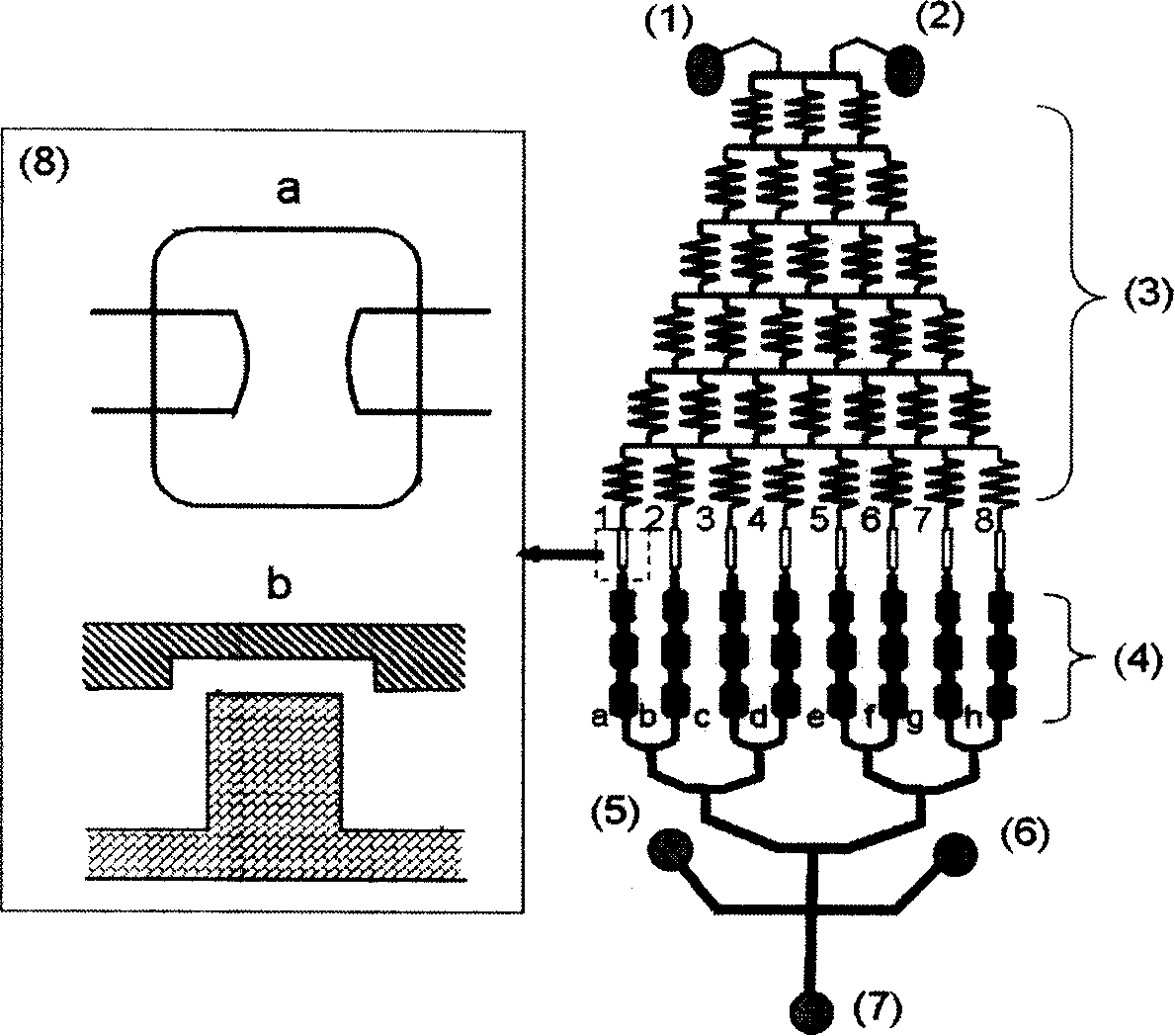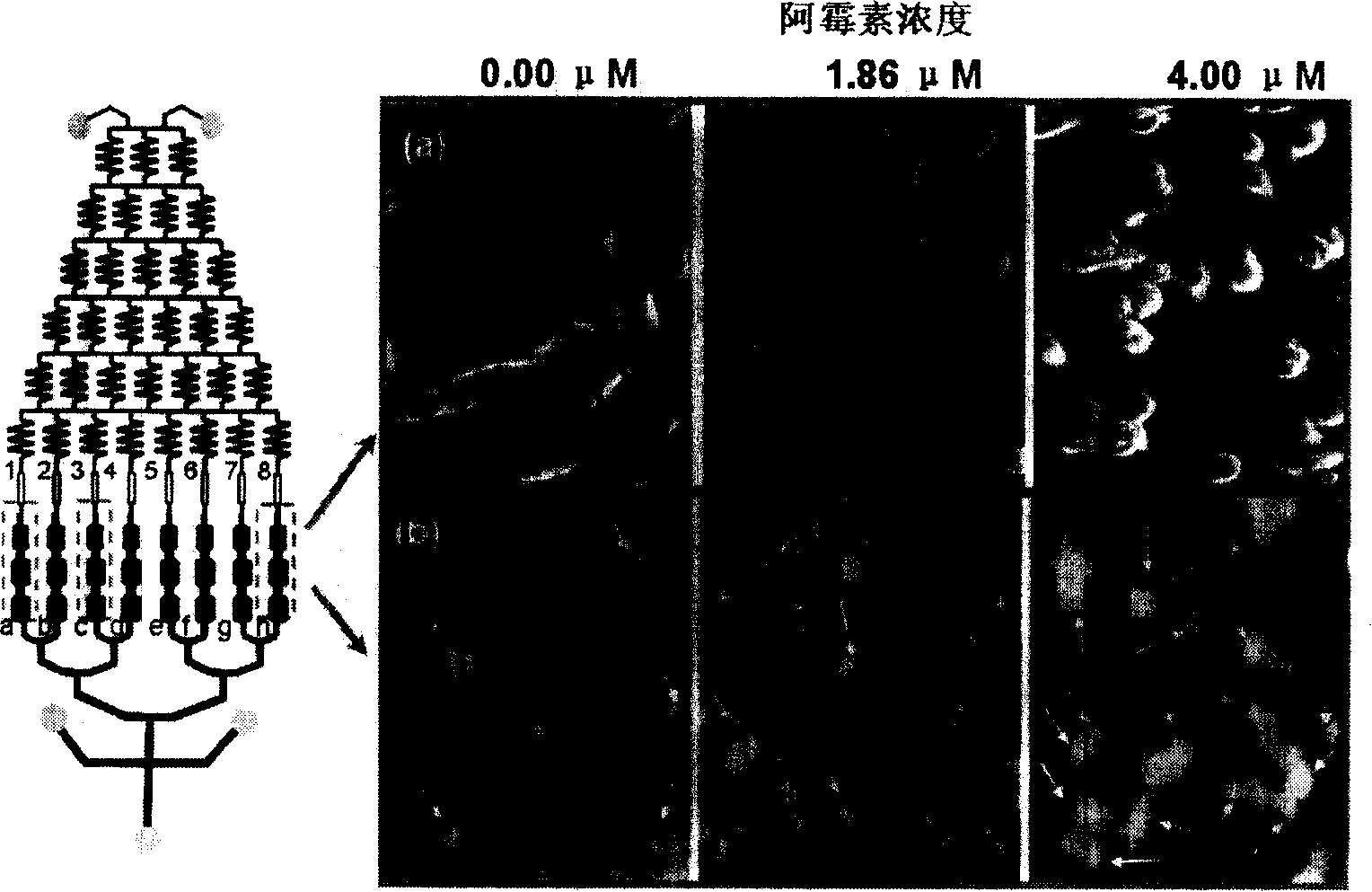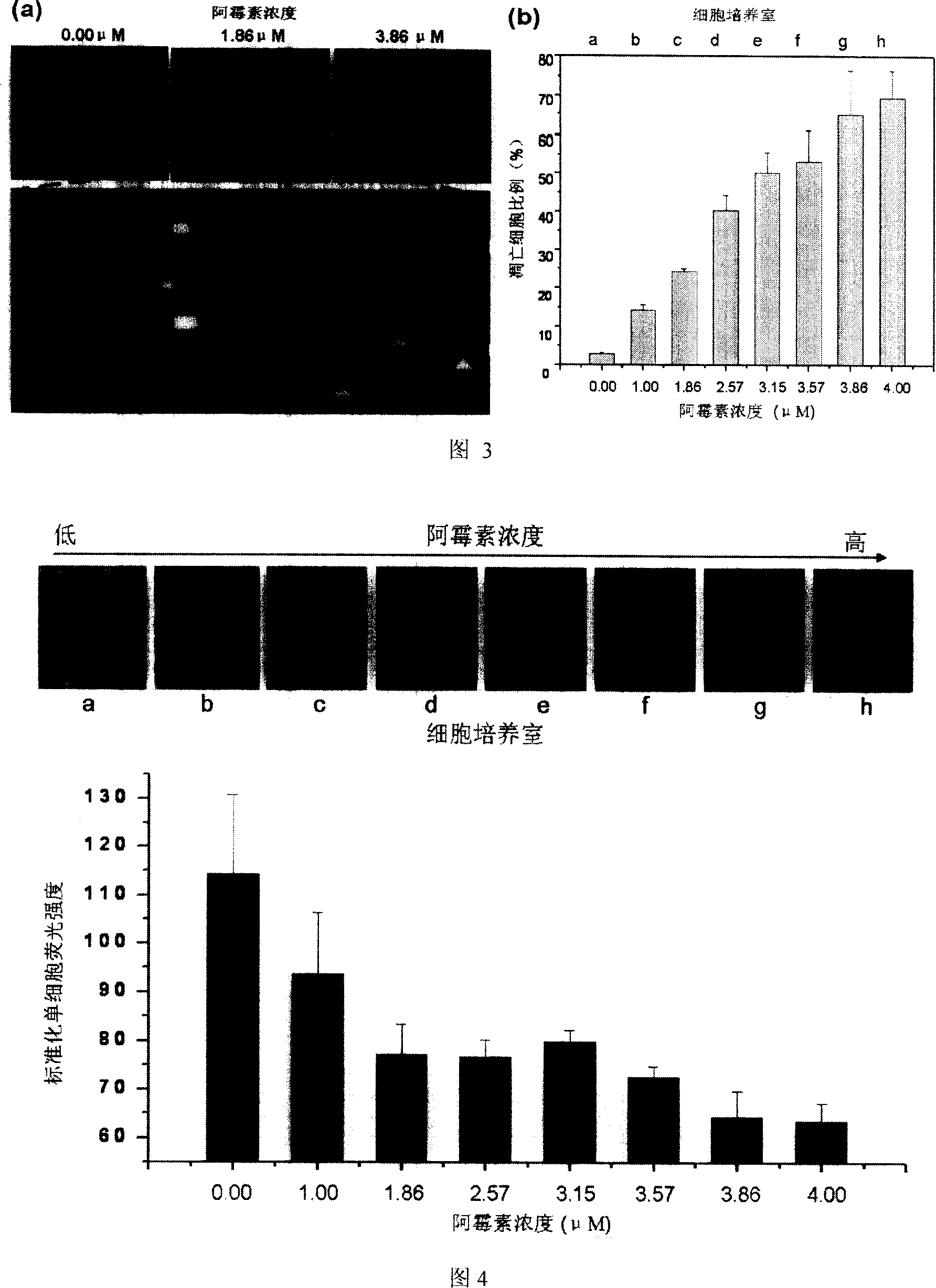Integration micro flow control chip used for apoptosis research and application thereof
A microfluidic chip and cell technology, applied in the field of cell apoptosis research, can solve the problems of long processing time, difficulty in real-time analysis of cell apoptosis kinetics, cumbersome operation, etc., and achieve the effect of reducing the consumption of cells and reagents
- Summary
- Abstract
- Description
- Claims
- Application Information
AI Technical Summary
Problems solved by technology
Method used
Image
Examples
Embodiment 1
[0034] use figure 1The microfluidic chip shown was used to study the morphological changes of apoptosis. After the chip was inoculated with human hepatocellular carcinoma (HepG2), place it at 37°C in 5% CO 2 6 hours in the incubator. After the cells adhered to the wall, add DMEM medium (high sugar) with adriamycin concentrations of 0 μM and 4.0 μM, place the chip in the cell culture incubator for 24 hours, and keep the solution flowing from the concentration gradient generation unit to the cells at a small flow rate. culture unit. Phosphate buffer saline (PBS) was added to wash the cells, and the chip was observed under an optical microscope. Then in 1mg mL -1 acridine orange Cells were labeled with ethidium bromide and immediately viewed under a fluorescence microscope. Such as figure 2 As shown, doxorubicin induces apoptosis of HepG2 cells, and presents typical morphological changes of apoptosis: cells shrink, become round, and the spacing becomes larger; chromatin ...
Embodiment 2
[0036] use figure 1 The microfluidic chip shown was used to study cell membrane changes during cell apoptosis. Chips were inoculated with HepG2 and placed at 37°C, 5% CO 2 6 hours in the incubator. After the cells adhered to the wall, add DMEM medium (high sugar) with adriamycin concentrations of 0 μM and 4.0 μM, place the chip in the cell culture incubator for 24 hours, and keep the solution flowing from the concentration gradient generation unit to the cells at a small flow rate. culture unit. Add PBS solution to wash the cells, add the labeling solution Annexin V / PI, place the chip in the dark for 15 minutes, and finally observe the chip under a fluorescent microscope. As shown in Figure 3, doxorubicin induces characteristic changes in the HepG2 cell membrane: in the early stage of apoptosis, the phosphatidylserine (PS) located on the inner side of the cell membrane is turned outward, showing a green circle (●); in the late stage of apoptosis, the cell membrane is permea...
Embodiment 3
[0038] use figure 1 The microfluidic chip shown was used to study the change of mitochondrial membrane potential (MMP) during apoptosis. Chips were inoculated with HepG2 and placed at 37°C, 5% CO 2 6 hours in the incubator. After the cells adhere to the wall, add DMEM medium (high sugar) with adriamycin concentration of 0 μM and 4.0 μM, place the chip in the cell culture incubator for 24 hours, and keep the solution from the concentration gradient generation unit to the cell culture at a small flow rate. unit. Add PBS solution to wash the cells, add labeling solution Rhodamine-123 (5 μg mL -1 ), the chip was placed in an incubator for 30 minutes, and then PBS solution was added to wash the cells, and finally the chip was placed under a fluorescence microscope for observation. As shown in Figure 4, doxorubicin leads to the leakage of MMP-dependent Rh-123, the fluorescence intensity of HepG2 cells is reduced, and the MMP is dissipated, and the degree is enhanced with the inc...
PUM
 Login to View More
Login to View More Abstract
Description
Claims
Application Information
 Login to View More
Login to View More - R&D
- Intellectual Property
- Life Sciences
- Materials
- Tech Scout
- Unparalleled Data Quality
- Higher Quality Content
- 60% Fewer Hallucinations
Browse by: Latest US Patents, China's latest patents, Technical Efficacy Thesaurus, Application Domain, Technology Topic, Popular Technical Reports.
© 2025 PatSnap. All rights reserved.Legal|Privacy policy|Modern Slavery Act Transparency Statement|Sitemap|About US| Contact US: help@patsnap.com



